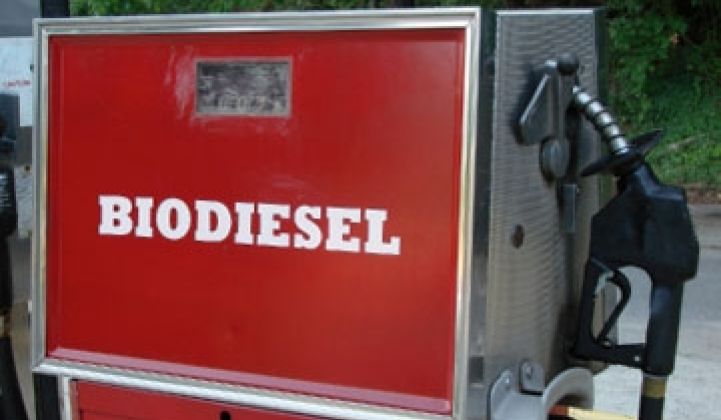Mark Twain once quipped, "The reports of my death are greatly exaggerated." Two weeks ago, we wrote that U.S. biodiesel producers were up the creek without a paddle (see The State of U.S. Biodiesel).
The U.S. Congress just threw them a life jacket.
On December 31, 2009, Congress allowed a crucial $1.00/gal tax credit to expire, resulting in U.S. biodiesel production capacity dipping to around 15%.
Fortunately for biodiesel producers, the gravitational pull between politicians and bailing out unprofitable industries is among the strongest forces in the universe.
On Wednesday, the U.S. Senate voted 62-36 for the "American Workers, State, and Business Relief Act," which retroactively reinstituted the $1.00/gal biodiesel tax credit through December 31, 2010. The House and Senate must reconcile differences between a similar bill called H.R. 4213, but the passage of this bill in the Senate is of immense importance for the industry.
Is biodiesel even worth it?
I know what a lot of you are going to say. We need biodiesel. It is a domestic renewable energy source that displaces petroleum diesel. It has numerous environmental benefits. The industry produces tens of thousands of jobs.
All of these are valid points.
Except they neglect two unsightly facts: first, the U.S. will divert more than 10% of its soybean crop to displace a little more than 1% of its diesel consumption (assuming 650 million gallons are produced - see EPA Issues Renewable Fuel Standards).
Second, the economics of U.S. biodiesel are unprofitable without subsidies.
For example, let's assume that to produce one gallon of biodiesel requires 7.3 pounds of feedstock. If we use soybeans -- which account for close to 85% of the feedstocks used in the U.S. -- and the spot price for soybean oil on the Chicago Mercantile Exchange is $.40/lb -- we find that the per gallon feedstock cost to produce a gallon of biodiesel is $2.92/gal.
If you add $0.81 per gallon in capital, energy, and operational costs (net of any sales of glycerin), we find that the levelized cost to produce a gallon of unsubsidized soy-based biodiesel is $3.73/gal.
According to the Department of Energy, in early March, the wholesale price for diesel in the U.S. was around $2.00/gal. This means that biodiesel producers must be able to produce biodiesel at a cost of $1.84/gal to break even with the wholesale cost of diesel, given that biodiesel only contains 92% of the amount of energy as diesel on a btu basis.
Unfortunately, even with the $1/gal subsidy, soybean biodiesel is still uncompetitive with diesel. Soybean biodiesel is not the only game in town; a number of companies are using waste vegetable oil and animal tallow as feedstocks. These products generally have a better cost profile than soybean oil and do not compete with food supplies. Yet, the ability to scale waste feedstocks remains limited, due to the logistical challenges of sourcing and collecting discarded waste from restaurants and factories (see Biofuels 2010: Spotting the Next Wave).
I recognize that I will continue to be criticized any time I bring up any point that exposes the limitations of ethanol and biodiesel and that is contrary to the official propaganda that Big Agriculture extols. That being said, my biggest concern is not that we subsidize biofuels (after all, one could make a very compelling economic argument that all fossil fuels are subsidized in the absence of a carbon tax -- that is, the price of fossil fuels does not represent the total costs if one includes the negative externalities that society has to pay); rather, it is that our governmental leaders seem to have decided that ethanol and biodiesel should be the future of biofuels rather than leveling the playing field for all biofuels, including algae and synthetic designer fuels, and letting the market choose the most efficient fuel.



